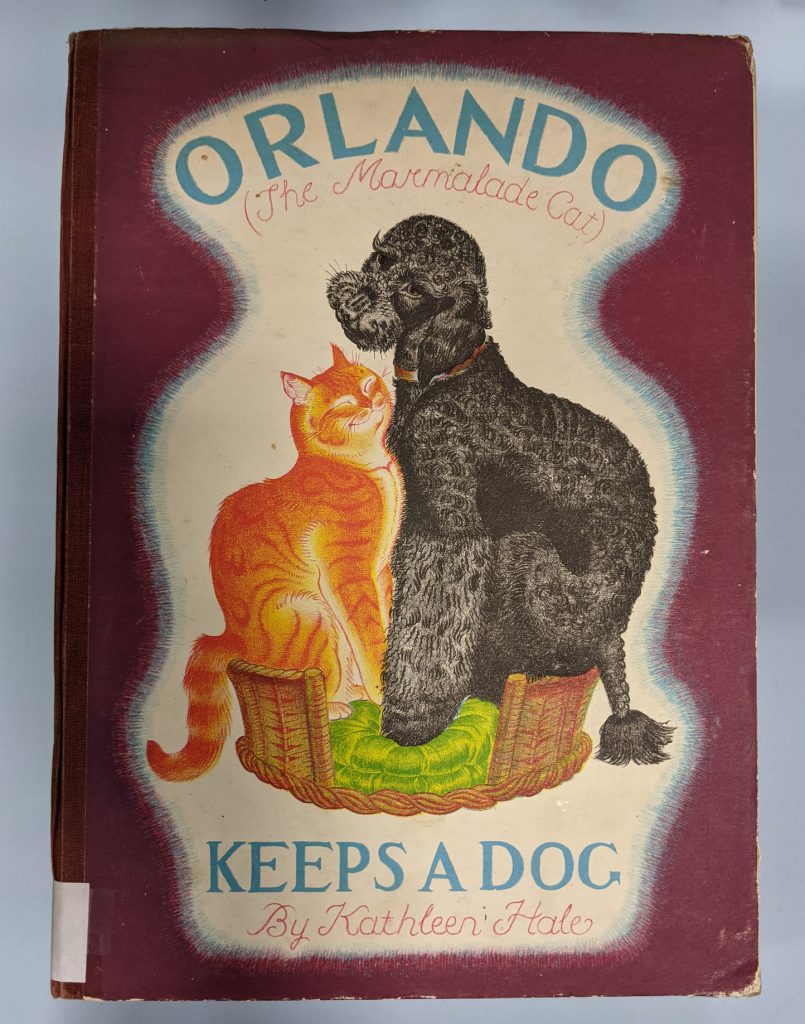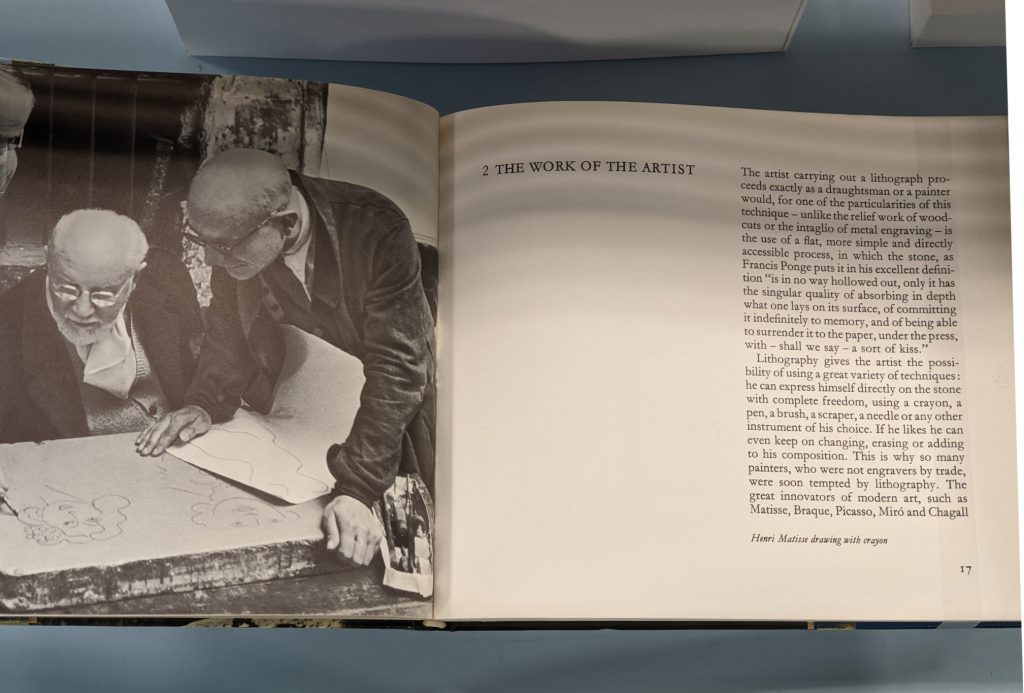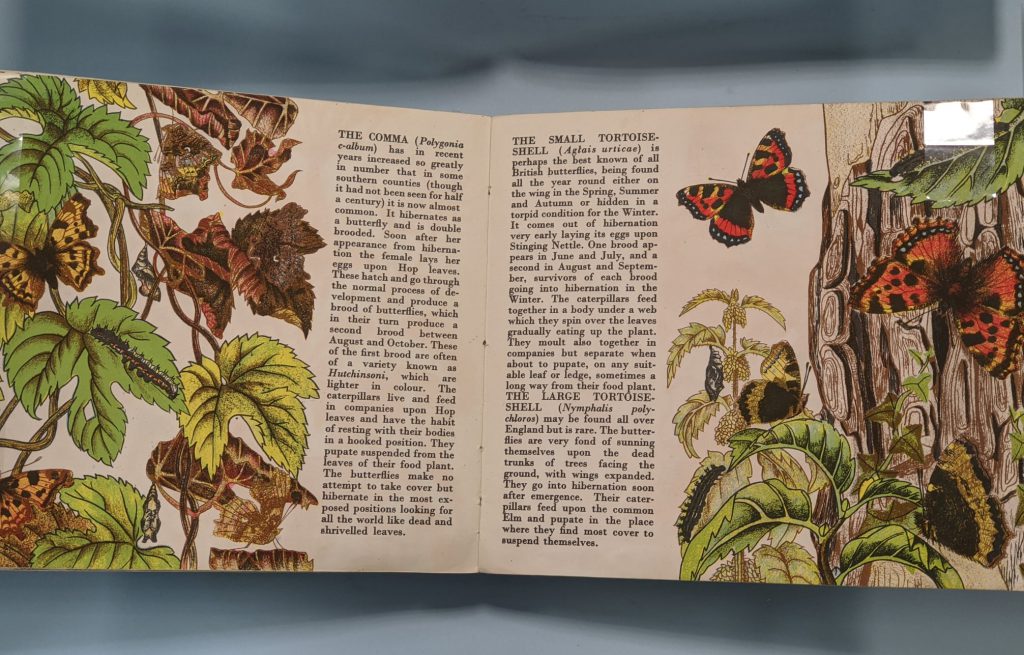Artist Lithography in Children’s Books — Lithography is a printing method which takes an image from a flat surface, using the principle of the opposition between oil and water. In artist lithography (also called autolithography or hand lithography) the artist draws or paints directly onto a stone, transfer paper or printing plate using oil-based media, for example a special grease pencil. The artwork then goes through a preparatory process before the image can be printed onto paper. This process gives the artist full control over their work, for example colour blending, tone and shading. In other lithography processes, an artist’s illustration is transferred to the printing plate by professional lithographers before being printed. This display is available to view on the 1st floor of the National Library in Wellington.

1 
2 
3 
4 
5 
6 
7
1
Flammarion’s ‘Album du Père Castor’ series of picture books was developed and edited by Parisian bookseller Paul Faucher, an admirer of the concept of child-centred education. Faucher was inspired by the cheap but colourful children’s books produced by state publishing houses in Russia from 1918 onwards, in which the use of autolithography was a key part of keeping costs down. Like their Russian predecessors, the ‘Père Castor’ books were intended to be a source of inspiration for children rather than precious objects.
Daudet, Alphonse. ‘La chèvre de Monsieur Seguin’. Illustrated by André Pecq.
Paris: Flammarion, 1946.
(Series: ‘Album du Père Castor’)
2
‘Puffin picture books’ were the brainchild of publisher Noel Carrington who developed and edited the series, and production began in 1940. It was particularly important during wartime that the books be affordable and, again, costs were kept down by the artists drawing directly on the lithographic plates, streamlining the usual printing process. These abundantly illustrated books initially cost only sixpence each.
Johnston, Arnrid. ‘Animals of North America’.
Harmondsworth, Middlesex: Penguin Books, 1942.
(Series: ‘Puffin picture books’, 28)
3
In this story Orlando and his family open a shop called ‘The Frisky Housewife’. The shop stocks all kinds of wonderful things that are exchanged for fish and milk to feed hungry stray cats.
Hale, Kathleen. ‘Orlando (the marmalade cat): The Frisky Housewife’.
London: Country Life Ltd., 1956.
Printed by W.S. Cowell
4
Kathleen Hale learnt how to create her own lithograph separation plates at the publisher W.S. Cowell. To combat the shortage of metal during World War II, Cowell had invented the Plasticowell lithography system, in which illustrations were drawn on thin plastic plates. Each colour was drawn on a separate transparent plate, and the artist could overlay the transparencies while they worked to check their progress.
An author’s note on the back of the title page reads: “The illustrations in this book have been drawn direct by the author on ‘Plasticowell’ a transparent plastic material used in lithography and lithographed in Great Britain by W.S. Cowell at their press, the Butter Market, Ipswich”
Hale, Kathleen. ‘Orlando (the marmalade cat) keeps a dog’.
London: Country Life Ltd.; New York: Transatlantic Arts, 1949.
5
The artist lithography process in action. In this photograph Henri Matisse uses a crayon to draw directly onto a prepared lithographic stone.
Loche, Renée. ‘Lithography’.
New York: Van Nostrand Reinhold,1974.
6
Richard Chopping both wrote and lithographed this beautiful example of a Puffin picture book, one of several natural history and children’s books that he produced in the 1940s.
Chopping, Richard. ‘Butterflies in Britain’.
West Drayton, Middlesex: Penguin Books, 1943.
(Series: ‘Puffin picture books’, 29)
7
Artist Lithography in Children’s Books display drawn from the National Children’s Collection.
Lithography is a printing method which takes an image from a flat surface, using the principle of the opposition between oil and water. In artist lithography (also called autolithography or hand lithography) the artist draws or paints directly onto a stone, transfer paper or printing plate using oil-based media, for example a special grease pencil. The artwork then goes through a preparatory process before the image can be printed onto paper.
This process gives the artist full control over their work, for example colour blending, tone and shading. In other lithography processes, an artist’s illustration is transferred to the printing plate by professional lithographers before being printed.